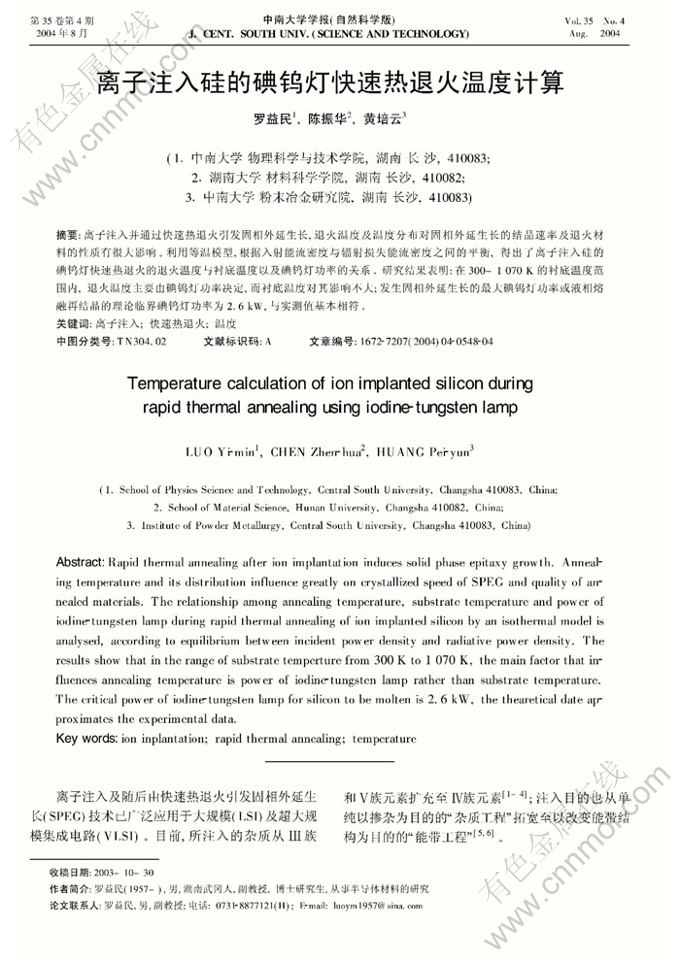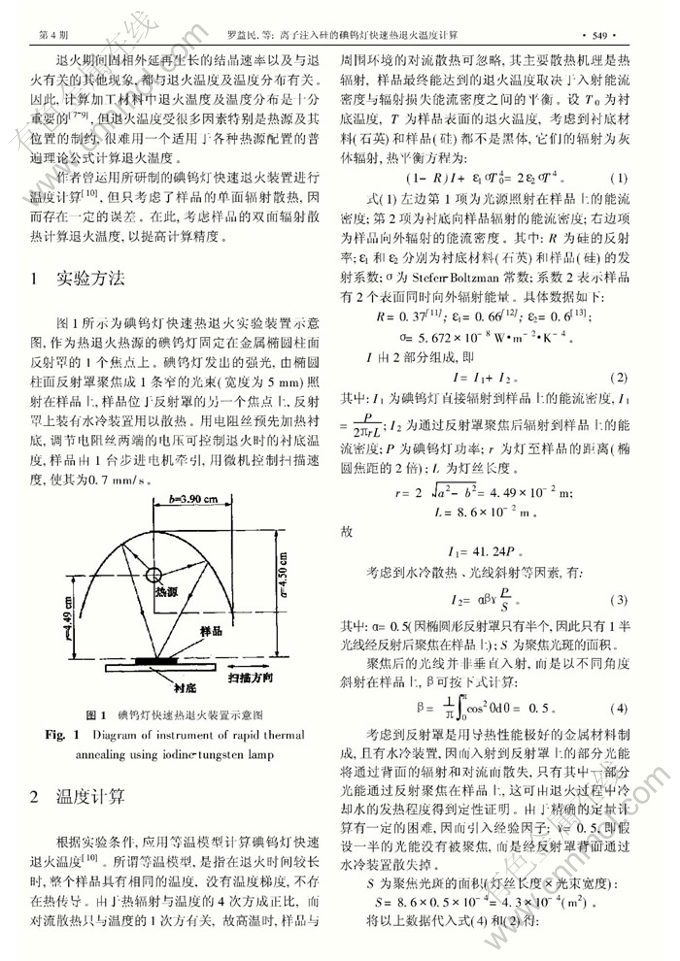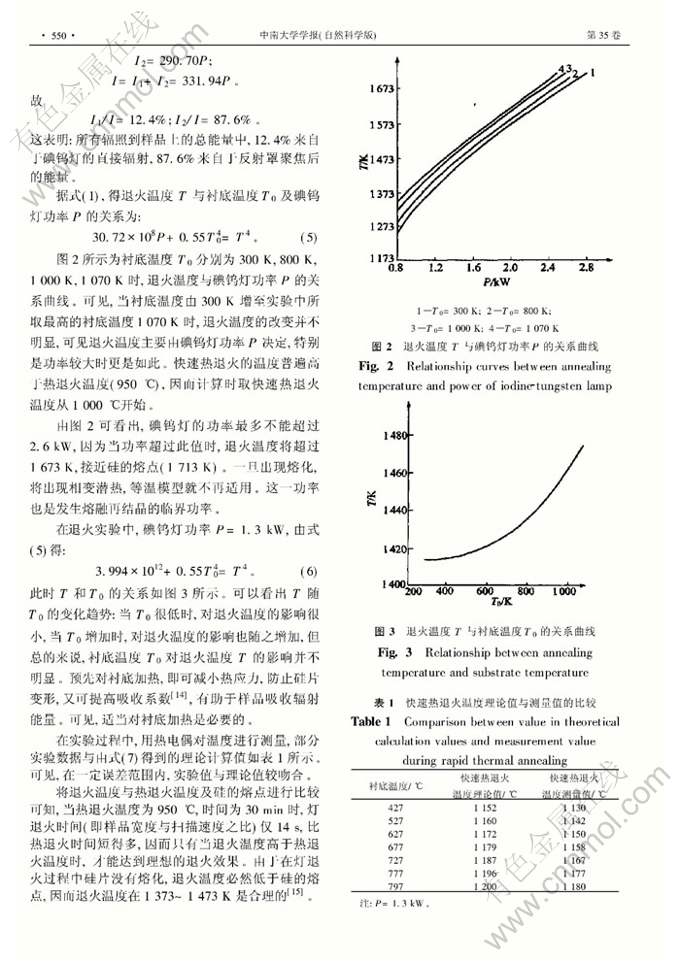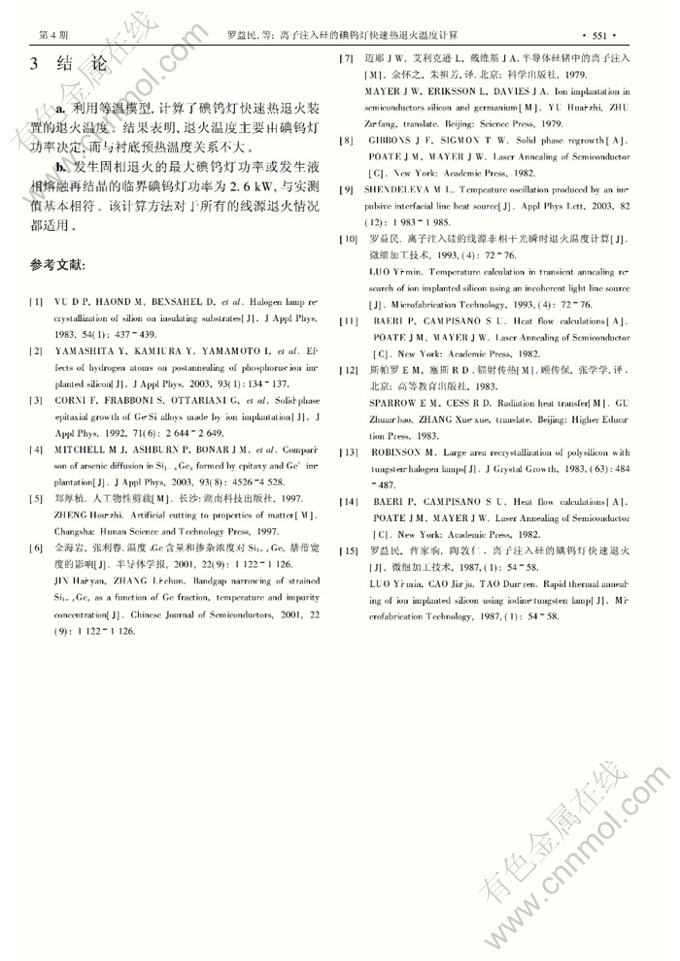离子注入硅的碘钨灯快速热退火温度计算
来源期刊:中南大学学报(自然科学版)2004年第4期
论文作者:罗益民 陈振华 黄培云
文章页码:548 - 551
关键词:离子注入;快速热退火;温度
Key words:ion inplantation; rapid thermal annealing; temperature
摘 要:离子注入并通过快速热退火引发固相外延生长,退火温度及温度分布对固相外延生长的结晶速率及退火材料的性质有很大影响。利用等温模型,根据入射能流密度与辐射损失能流密度之间的平衡,得出了离子注入硅的碘钨灯快速热退火的退火温度与衬底温度以及碘钨灯功率的关系。研究结果表明:在300~1 070 K的衬底温度范围内,退火温度主要由碘钨灯功率决定,而衬底温度对其影响不大;发生固相外延生长的最大碘钨灯功率或液相熔融再结晶的理论临界碘钨灯功率为2.6 kW,与实测值基本相符。
Abstract: Rapid thermal annealing after ion implantation induces solid phase epitaxy growth. Anneal-ing temperature and its distribution influence greatly on crystallized speed of SPEG and quality of annealed materials. The relationship among annealing temperature, substrate temperature and power of iodine-tungsten lamp during rapid thermal annealing of ion implanted silicon by an isothermal model is analysed, according to equilibrium between incident power density and radiative power density. The results show that in the range of substrate temperture from 300 K to 1 070 K, the main factor that influences annealing temperature is power of iodine-tungsten lamp rather than substrate temperature.The critical power of iodine-tungsten lamp for silicon to be molten is 2.6 kW, the thearetical date approximates the experimental data.



